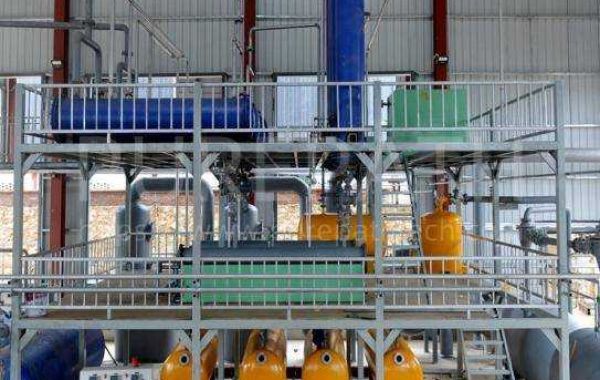In the intricate world of oil refining, the pursuit of high-quality base oils and lubricants necessitates sophisticated separation techniques. The solvent extraction plant stands as a cornerstone in this endeavor, offering a precise method to selectively remove undesirable components from various oil feedstocks, including those derived from waste. Understanding the principles and applications of the waste oil solvent extraction process is crucial to appreciating its role in producing premium base oils with enhanced performance characteristics.
Traditional oil refining methods, while effective in many aspects, often struggle to selectively remove specific classes of compounds that can negatively impact the properties of the final base oil. For instance, aromatic compounds, while naturally present in crude oil, can lead to lower viscosity index, reduced oxidation stability, and poor color in base oils. This is where the solvent extraction plant demonstrates its unique capabilities. By employing carefully chosen solvents, this technology can selectively dissolve and separate these undesirable components, leaving behind a raffinate rich in the desired saturated hydrocarbons that form the foundation of high-quality base oils.
The core of a solvent extraction plant lies in the counter-current contact between the oil feedstock and the selective solvent. The feedstock, which could be a distillate fraction from crude oil refining or processed waste oil, is introduced at one end of an extraction tower, while the solvent is introduced at the other. As the two phases flow past each other, the solvent preferentially dissolves the targeted impurities (the extract phase), while the desired base oil components (the raffinate phase) remain relatively undissolved. The extract and raffinate streams are then separated, and the solvent is recovered and recycled within the plant, making the process economically and environmentally more sustainable.
The choice of solvent is critical in the design and operation of a solvent extraction plant. Different solvents exhibit varying degrees of selectivity for different types of aromatic and polar compounds. Commonly used solvents include furfural, N-methylpyrrolidone (NMP), and phenol. The selection of the appropriate solvent depends on the characteristics of the feedstock and the desired properties of the final base oil. Factors such as solvency power, selectivity, viscosity, density, boiling point, and toxicity are carefully considered.
The application of the solvent extraction plant is particularly significant in the context of recycling and upgrading waste oil. The waste oil solvent extraction process allows refiners to take a complex mixture of hydrocarbons, often containing degradation products, additives, and contaminants, and selectively remove the components that would hinder its use as a high-quality base oil. This process can significantly enhance the value of recycled oil, making it a viable alternative to virgin crude oil-derived base stocks.
Compared to traditional refining methods, which often rely on distillation and hydrotreating, solvent extraction offers a different approach to impurity removal. While hydrotreating is effective in removing sulfur, nitrogen, and oxygen, and in saturating olefins, solvent extraction excels at selectively removing aromatic compounds and improving viscosity index. Often, a combination of these technologies is employed in a modern refinery to produce base oils that meet demanding industry specifications. A solvent extraction plant can be strategically integrated into a larger refining complex to process specific fractions that benefit most from this selective separation technique.
In conclusion, the solvent extraction plant is a vital component of modern oil refining, offering a precise and effective method for separating undesirable components from oil feedstocks. The waste oil solvent extraction process highlights the importance of this technology in upgrading recycled oils, contributing to a more sustainable and resource-efficient industry. By carefully selecting solvents and optimizing the extraction process, refiners can produce high-quality base oils with enhanced performance characteristics, meeting the evolving demands of the lubricant market.








